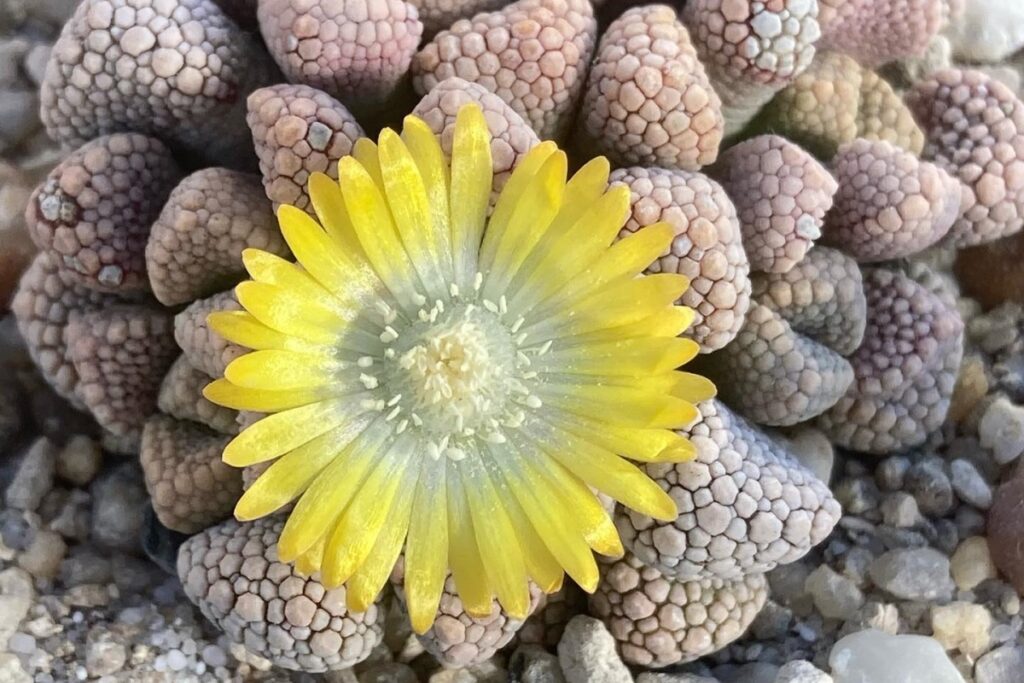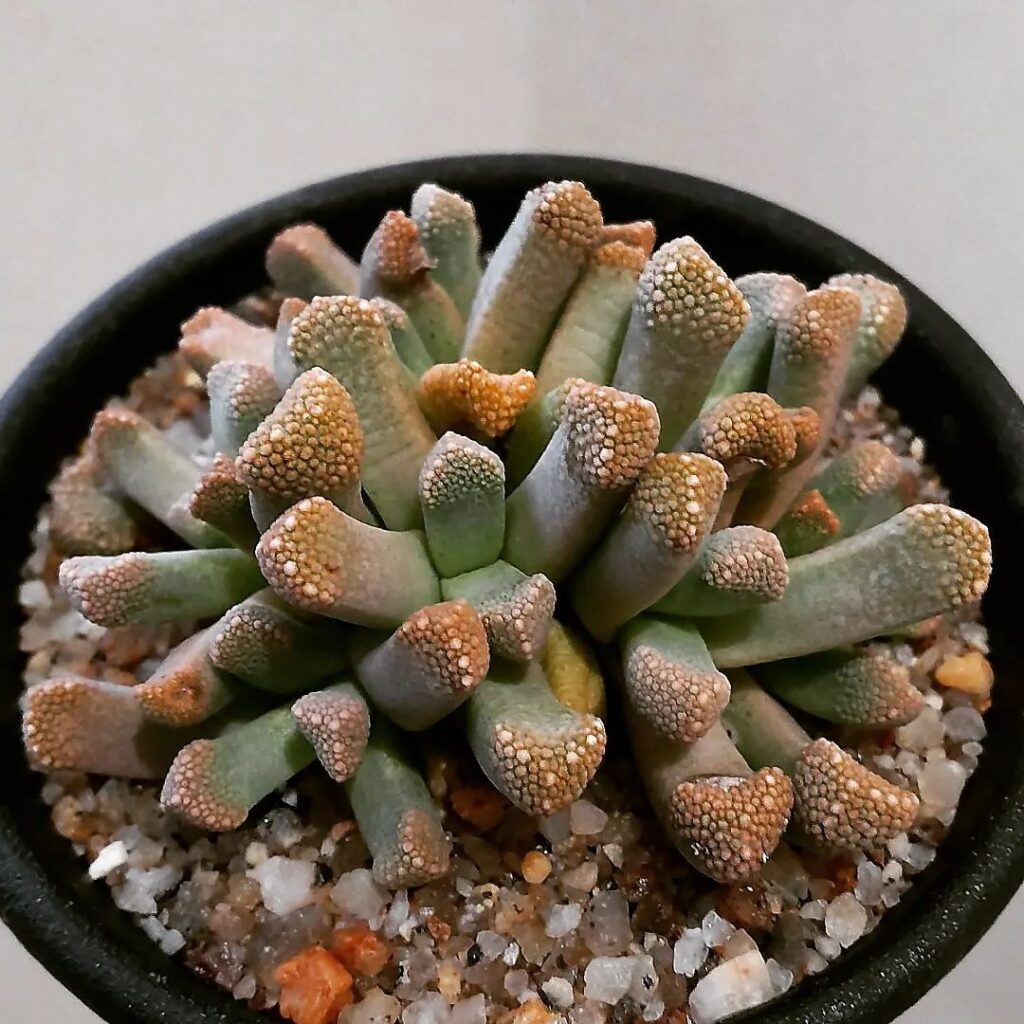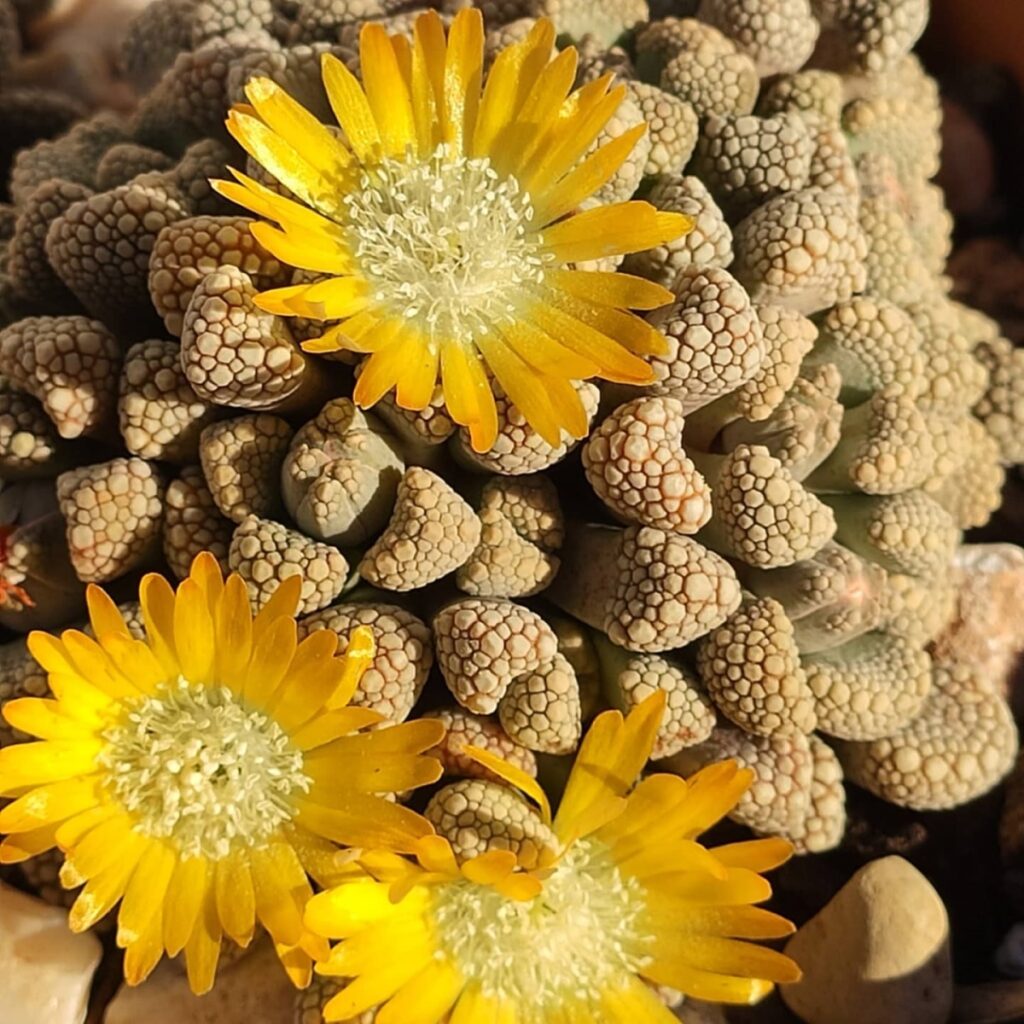You Won’t Believe This Plant is Real – Titanopsis schwantesii’s Mind-Bending Disguise
Have you ever stumbled upon a plant so bizarrely camouflaged that you had to do a double-take? Well, brace yourself for the mind-boggling Titanopsis schwantesii – a succulent so convincingly rock-like, you’ll question if it’s even alive! With its warty leaf rosettes and stone-mimicking hues, this little guy is a master of disguise in the plant kingdom. Prepare to have your senses delightfully baffled as we unveil the secrets behind this nature’s ultimate trickster.

Contents
About Titanopsis schwantesii
Titanopsis schwantesii is a true marvel, sporting small rosettes of fleshy leaves densely coated in white, warty tubercles that give it an uncanny resemblance to pebbles or rocks. This mat-forming succulent is a close cousin to Titanopsis calcarea, but it stands out with its more erect leaves and smaller frosted warts adorning the rounded leaf tips. Even the Crassula ausensis subsp. titanopsis was named after its striking similarity to our featured plant, growing side-by-side in the same habitat.
With rosettes reaching up to 2-3 inches wide, comprised of 6-8 (or more) tightly clustered opposite leaves, Titanopsis schwantesii is a true showstopper. Its leaves are short and fleshy, up to 1 inch long and around 1/4-1/2 inch wide at the base, broadening to around 1/2 inch near the tip. The leaves come in shades of white, grey, or even greyish-brown, with their upper and lower surfaces covered in a captivating array of greyish-white, yellowish, flesh-colored, or brownish flat warts – adding to the rock-like illusion.
But wait, there’s more! In early spring, this unassuming plant bursts into bloom, revealing solitary, 1/2-1 inch wide, pale canary yellow “daisy” flowers that seem almost too vibrant for its stony exterior. With numerous petals arranged in two whorls, surrounded by 5-6 tubercle-coated sepals, Titanopsis schwantesii’s blooms are a delightful contrast to its rugged appearance.
Related Post:
1,000 Types of Succulents [With Pictures]
How to Care for Titanopsis schwantesii
Light
While Titanopsis schwantesii loves basking in full sun, it can tolerate partial shade as long as the environment is bright. If you live in a scorching hot region, be cautious not to overexpose it to direct, intense sunlight. For indoor growers, a bright grow light can substitute natural sunlight, ensuring your rocky friend thrives.
Watering
Titanopsis schwantesii prefers a dry environment, so water sparingly. Only water when the soil is completely dry. During the winter months, you should stop watering completely. It’s crucial not to overwater this plant, as soggy soil conditions can lead to issues. When in doubt, err on the side of underwatering. Try to keep the leaves and rosettes dry, and water in the morning when temperatures will be warmer later in the day to allow any moisture to evaporate. Signs of overwatering include wrinkled, floppy leaves and a pale center on the leaves. If you notice these, hold off on watering until the plant recovers.
Soil

Mirroring its natural limestone-rich habitat, Titanopsis schwantesii craves a well-draining, slightly alkaline soil mix. A cactus or succulent potting mix amended with extra grit, such as perlite or pumice, will provide the perfect balance of drainage and airiness.
Fertilizer
During the spring growing season, treat your Titanopsis schwantesii to a weak, balanced fertilizer to give it a gentle nudge. You can repeat this in early autumn as the weather cools, but avoid fertilizing late in the season or during its winter dormancy.
Temperature and Humidity
Titanopsis schwantesii is quite tolerant of heat and can withstand brief periods of frost down to around 14°F (-10°C). However, this species is sensitive to excessive moisture and humidity, which can cause problems. Ensure proper air circulation and avoid damp conditions, as high humidity levels can negatively impact the plant’s health. Provide a moderate climate without excessive moisture in the air.
Pests and Problems
Keep a watchful eye out for cochineal infestations, which can plague succulent plants like Titanopsis schwantesii. Overwatering is another common pitfall, potentially leading to root rot and other fungal diseases. Maintaining proper watering practices and monitoring for pests is key to keeping your rocky pal in top shape.
Pruning
Pruning is generally unnecessary for Titanopsis schwantesii, but you can gently trim back overgrown or unsightly parts using clean, sharp scissors or pruners to maintain its compact, neat appearance.

Potting and Repotting
For optimal drainage, grow Titanopsis schwantesii in porous clay pots that readily absorb excess moisture from the soil. These slow-growing plants can remain in the same container for several years before requiring a larger home. When the time comes, repot during the spring growing season, taking care not to damage the fragile roots.
Propagating Titanopsis schwantesii
Titanopsis schwantesii can be easily propagated from seed or by division of larger clumps that include a piece of the rootstock.
Seeds:
- Pollinate flowers with a soft paintbrush to aid seed production in spring.
- Sow seeds in a well-draining seed-starting mix after moistening the soil.
- Place in a bright, shaded area until germination occurs.
- Once seedlings develop their first true leaves, transplant into individual containers.
Division:
- In spring or fall, carefully divide larger clumps, ensuring each section has a piece of the rootstock.
- Allow any exposed areas to callus over before replanting.
- Plant the divisions in a well-draining potting mix and water sparingly until established.
- Once rooted, you can transfer the new plants to their permanent containers.
